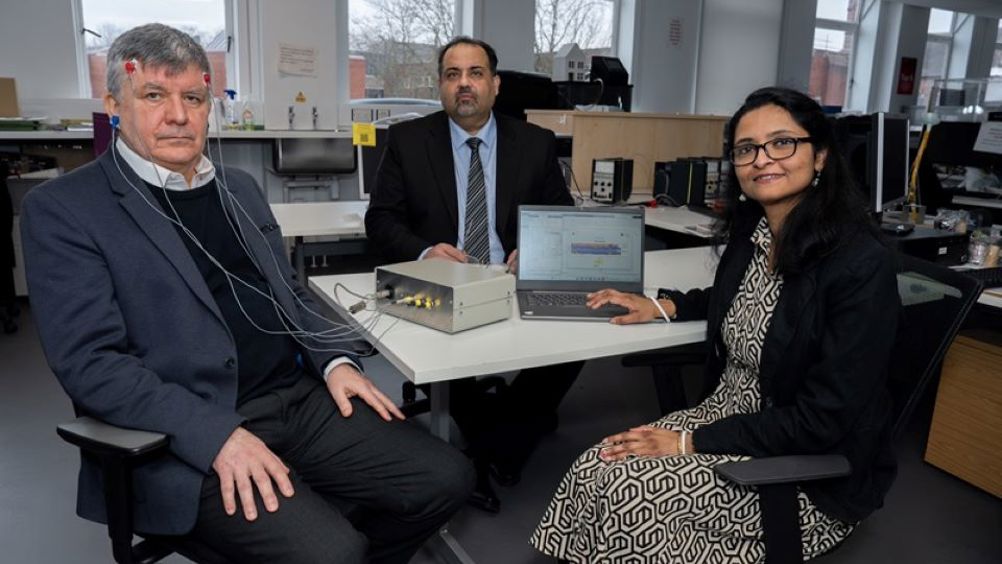Brainwave reader helps people with MND communicate with thoughts
People unable to communicate through speech or eye movement can use their thoughts to indicate ‘yes’ or ‘no’ thanks to a brainwave reader developed by Nottingham Trent University (NTU).

Amin Al-Habaibeh, Professor of Intelligent Engineering Systems within the Product Design team at NTU, wanted to support charities which help people with advanced Motor Neurone Disease (MND) and Completely Locked-in Syndrome after his brother-in-law passed away aged 38 after having MND.
The research has led to the development of an affordable brainwave reader made with off-the-shelf parts and a novel artificial intelligence (AI) algorithm developed by the research team.
The technology centres on interpreting people’s brain signals when they are invited to envisage contrasting imaginary situations – or imaginations - to indicate ‘yes’ or ‘no’ answers.
Professor Al-Habaibeh said off-the shelf components include three low-cost electroencephalography (EEG) boards that allow insight into brain activity by amplifying minute brain signals. The amplified signals are then captured using off-the-shelf data acquisition board to interface to the computer. Then the software captures the signals for signal processing and AI implementation.
MORE FROM ARTIFICIAL INTELLIGENCE
“Different activities of the brain are expected to produce different signals at different locations,” said Professor Al-Habaibeh. “Our system captures the brain signals and seeks to identify their ‘signatures’. The underpinning research shows, for example, that identifying three ‘imaginations’ have an average accuracy of 90 per cent with a maximum success rate of 100 per cent; and we have found that the success of the system depends on the focus of the person to capture high quality signals for training of the AI and the identification of the imagination or person’s thought.”
Register now to continue reading
Thanks for visiting The Engineer. You’ve now reached your monthly limit of news stories. Register for free to unlock unlimited access to all of our news coverage, as well as premium content including opinion, in-depth features and special reports.
Benefits of registering
-
In-depth insights and coverage of key emerging trends
-
Unrestricted access to special reports throughout the year
-
Daily technology news delivered straight to your inbox










UK Automotive Feeling The Pinch Of Skills Shortage
Not so much attracting skills to the UK but generating skills within the UK is what is needed! That statement suggest they are in effect wanting to...